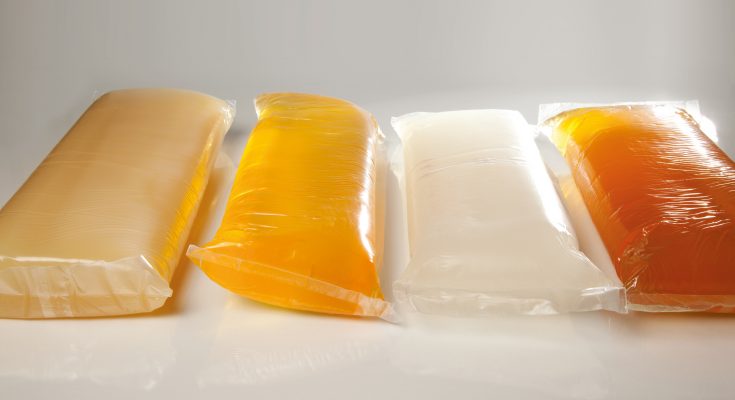Hot-melt adhesives (HMAs), generally identified as hot glue, are a form of thermoplastic adhesives. HMAs can be defined as an adhesives system, which are thermally melted and develop cohesion (internal strength) on cooling. HMAs are generally manufactured in the form of solid cylindrical sticks with varying dimensions. They are designed to melt in an electric hot glue gun, which uses continuous-duty heating elements to melt the glue, triggered by mechanical mechanism. The hot glue gun has a loading chamber, where the HMA sticks are loaded and heated up to their melting point i.e. 120-180 degree Celsius. After heating, the molten HMA is then dispensed through the hot glue gun’s nozzle. The molten HMA solidifies, within seconds to minutes, depending upon the composition of HMA and doesn’t require curing process for solidifying. HMAs, similar to all other adhesives, generally comprise one or more polymer plus additives, such as stabilizers and pigments.
Technological advancement in the HMAs industry has led to manufacturing of new polymers and adhesive formulations, which provide improved adhesion, physical properties and additional options for melting, applying, and activating the adhesives. HMAs with ease of application, fast pace solidification and relatively cheaper cost, help manufacturing industries in reducing the manufacturing cost and increase production output, on account of time saved during manufacturing process. Additionally, some HMAs contain almost negligible amount of solvent, resulting in lesser environmental issues.
The increased consumption of hot-melt adhesives is significantly contributing to the growth of the global adhesives industry. Hot-melt adhesives offer a variety of advantages impart superior manufacturing flexibility, in comparison with water or solvent based adhesives. Excellent adhesion, fast setting time and ease of application are few of the major benefits of using hot-melt adhesives. Dissimilar to water or solvent based adhesives, HMAs do not require drying and begin bonding almost instantly after being applied, as they cool down to their solidification point. This characteristic of speedy solidification is best for automotive manufacturing lines, which require rapid bond formation. HMAs are widely used in various industrial segments, such as book-binding, woodwork, nonwovens, footwear, packaging, product assembly line and pressure sensitive tapes, and tables.
Geographically, the hot-melt adhesives industry in North America is witnessing slow growth, as the market has attained maturity. Packaging and construction industry are major contributors in the North American HMAs market. The automotive and non-woven/hygiene industry has shown significant growth during the forecast period. The U.S. accounted for major share in the North America hot-melt adhesives market, followed by Canada.




